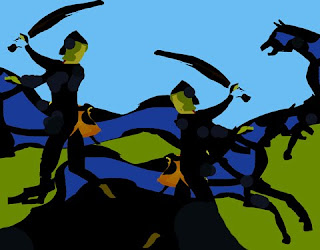How does art that takes human relations and social context as its modus operandi translate to independent and private space, where all audience but one (the artist) is absented – the object and subject of long meditation rather than momentary experience? And visa versa, engagement of the world by a piece created in very private space out of very private thoughts? Is translation possible?
The first is theoretically judged on the inter-relations (conceptual and emotional) represented, produced, prompted, communicated, provoked, and perhaps -- at its deepest either unerringly harmonious, a echo precisely and unflinchingly in tune, or critically divisive, even shunned, not merely thought or shock inducing, the envelope precisely and aggressively pushed. It aims at the external, social relations being by definition external to any one individual, and if it fails to provoke conversation, it would seem it fails.
Judgment of the second on relational terms is less direct as it may not purport to care one wit about social constructs, and dialogue beyond the artist’s dialogue with himself or herself may not be within its creative considerations. It aims at the internal, the individual by definition being only one part of social relations. It is not necessarily Utopian, and indeed may positively or darkly reflect unacknowledged social constructs that have become a part of a person. If it enters into no dialogue beyond its private beginnings, it is the tree falling in the forest with no one there to see it fall. We may still go to the forest the next day and discover the felled tree and make assumptions about how it must have fallen – a construct. Or not.
 Doodling today. I find the extent to which drawings break down into overlapping areas or complexes with parts able to separate yet occupy more than one area interesting. In this collage doodle, the reddish brown stripe separates from everything above the top of it and also separates from the part below the bottom of it while still occupying both areas. Likewise, the middle green separates from the area above it while still occupying that area.
Doodling today. I find the extent to which drawings break down into overlapping areas or complexes with parts able to separate yet occupy more than one area interesting. In this collage doodle, the reddish brown stripe separates from everything above the top of it and also separates from the part below the bottom of it while still occupying both areas. Likewise, the middle green separates from the area above it while still occupying that area.


























